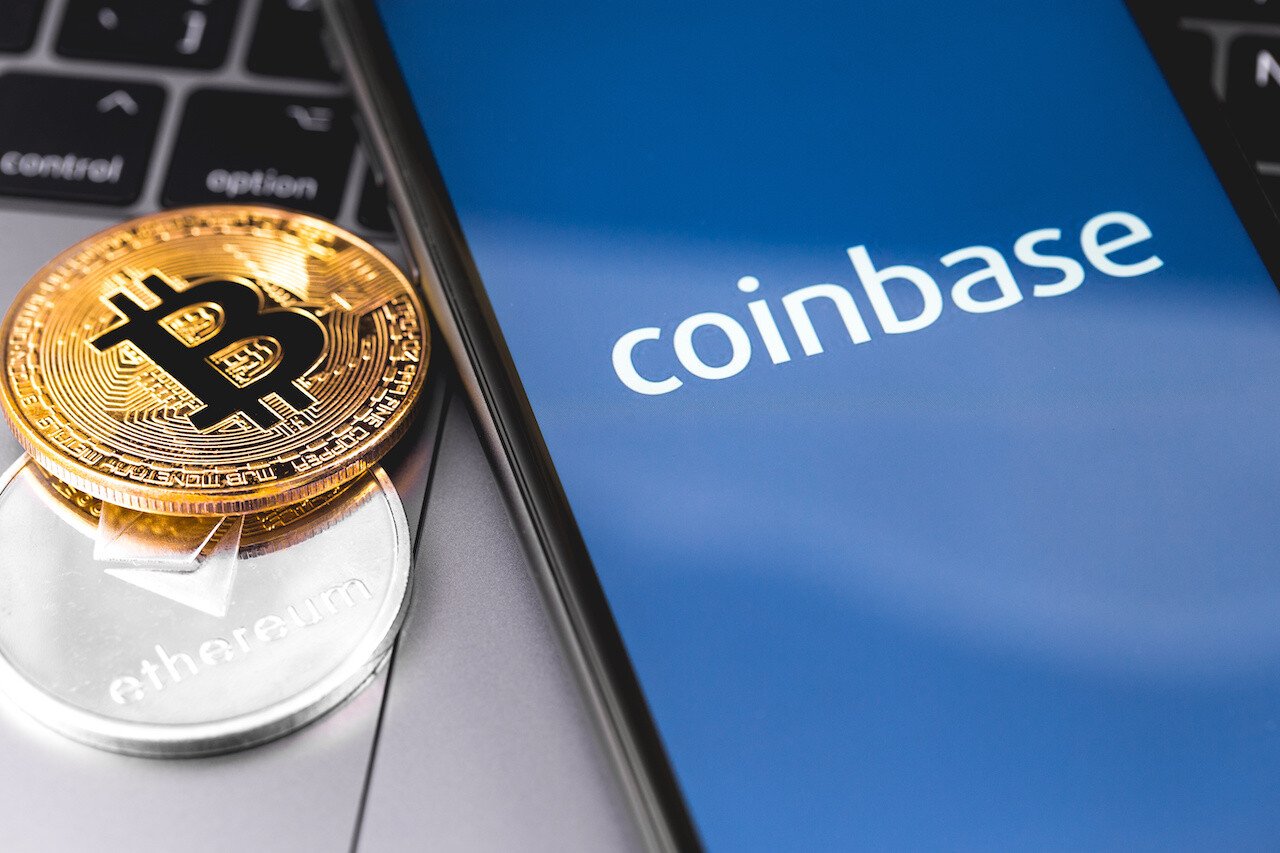Introduction
Welcome to the world of Bitcoin, a revolutionary digital currency that has taken the financial world by storm. With its decentralized nature and potential for massive returns, it’s no wonder that many individuals are considering investing in Bitcoin. However, the question on many minds is: when is the best time to buy Bitcoin?
Before answering that question, it’s important to first understand what Bitcoin is and how it operates. Bitcoin is a cryptocurrency that was introduced in 2009 by an anonymous person or group known as Satoshi Nakamoto. It is built on the concept of blockchain technology, which ensures the transparency and security of transactions.
Bitcoin operates on a peer-to-peer network, meaning that transactions are directly conducted between users without the need for intermediaries like banks. This decentralized aspect of Bitcoin is one of its major advantages, as it eliminates the need for centralized control and offers greater financial freedom.
Now that we have a basic understanding of Bitcoin’s background, let’s delve into the factors you should consider when deciding when to buy Bitcoin. These factors can help you navigate the volatile market and make an informed investment decision.
Understanding Bitcoin
Before jumping into the world of Bitcoin investing, it’s crucial to have a solid understanding of how this digital currency works. Bitcoin is a decentralized cryptocurrency, meaning it operates without the involvement of a central authority or government. It is based on blockchain technology, a distributed ledger system that securely records all transactions.
Bitcoin is created through a process called mining, where powerful computers solve complex mathematical algorithms to validate and record transactions on the blockchain. This mining process ensures the security and integrity of the network.
One of the key features of Bitcoin is its limited supply. There will only ever be 21 million Bitcoins in existence, which makes it a deflationary asset. This scarcity has contributed to its value over time.
Another important factor to understand is the volatility of Bitcoin. This digital currency is known for its price fluctuations, sometimes experiencing significant gains or losses within a short period. This inherent volatility presents both opportunities and risks for investors.
Bitcoin can be stored in digital wallets, which are essentially software programs that allow users to securely store, send, and receive Bitcoin. These wallets have unique addresses that serve as the destination for Bitcoin transactions.
Additionally, Bitcoin offers a level of anonymity due to its pseudonymous nature. While transactions are recorded on the blockchain, the identities of users involved in those transactions are not directly linked to their real-world identities. This privacy aspect has been a major appeal for many individuals.
Overall, understanding the fundamentals of Bitcoin is crucial before diving into the world of Bitcoin investing. It’s essential to grasp concepts such as decentralization, scarcity, volatility, and the storage of Bitcoin in wallets. With a solid foundation, you can make more informed decisions when it comes to buying and selling Bitcoin.
Factors to Consider
When it comes to deciding the best time to buy Bitcoin, several factors should be taken into consideration. These factors can help you evaluate the market conditions and make a more informed investment decision. Let’s explore some of the key factors to consider:
- Market Trends: Pay attention to the overall trends in the cryptocurrency market. Bitcoin’s price can be influenced by market sentiment, news events, regulatory developments, and investor sentiment. Analyzing market trends can give you insights into the potential direction of Bitcoin’s price.
- Timing the Market: Timing the market perfectly is extremely challenging, even for experienced investors. Bitcoin’s price can be highly volatile, making it difficult to predict short-term price movements. Instead of trying to time the market, consider a long-term investment strategy.
- Dollar-Cost Averaging: Dollar-cost averaging is a strategy that involves buying Bitcoin at regular intervals, regardless of the current price. This approach can help mitigate the impact of short-term price fluctuations and allow you to gradually build a Bitcoin position over time.
- Risk Management: Assess your risk tolerance before investing in Bitcoin. Due to its volatility, Bitcoin investments can experience significant price swings. Determine how much you are willing to invest and be prepared for potential losses.
- Long-term vs. Short-term Investing: Decide whether you are looking to invest in Bitcoin for the long term or for short-term gains. Long-term investing involves holding Bitcoin for an extended period, while short-term trading focuses on taking advantage of price movements within shorter timeframes.
While these factors can provide guidance, it’s important to remember that investing in Bitcoin carries risks. It’s advisable to do thorough research, seek advice from financial professionals, and only invest what you can afford to lose.
Market Trends
Understanding market trends is crucial when it comes to buying Bitcoin. The cryptocurrency market can be highly volatile and influenced by various factors. Analyzing market trends can help you make more informed decisions about when to enter or exit your Bitcoin investments. Here are some key aspects to consider:
1. Overall Market Sentiment: Keep an eye on the overall sentiment of the cryptocurrency market. Positive news, adoption by major institutions, and regulatory developments can drive up Bitcoin’s price, while negative news or market uncertainty can lead to price drops. Stay informed about the latest developments and investor sentiment.
2. Technical Analysis: Technical analysis involves studying historical price patterns, chart patterns, and indicators to predict future price movements. Analyzing key support and resistance levels, moving averages, and trading volumes can provide insights into Bitcoin’s trend. However, it’s important to note that technical analysis is not foolproof and should be used in conjunction with other analyses.
3. Fundamental Analysis: Fundamental analysis involves assessing the underlying value of Bitcoin and its potential for long-term growth. Factors such as network adoption, technological advancements, regulatory developments, and market demand can influence Bitcoin’s price. Stay updated with news and developments surrounding Bitcoin to gauge its fundamental strengths and weaknesses.
4. Market Cycles: The cryptocurrency market is known for its cycles of boom and bust. Understanding market cycles can help you identify potential entry and exit points. Bitcoin’s price has experienced significant bull runs followed by sharp corrections in the past. Learning from historical price movements can provide insights into potential future trends.
5. Diversify Your Investments: It’s important to diversify your investments to manage risk. Don’t solely focus on Bitcoin; consider investing in other cryptocurrencies or traditional assets. This diversification can help mitigate the impact of Bitcoin’s volatility and potentially yield better long-term returns.
Keep in mind that market trends can change rapidly, and accurately predicting short-term price movements is challenging. It’s advisable to approach Bitcoin investments with a long-term perspective and continue to monitor market trends to make informed decisions.
Timing the Market
Attempting to time the market to buy Bitcoin at the perfect price can be a daunting task. Bitcoin’s price is known for its volatility, often experiencing rapid fluctuations within short timeframes. While timing the market accurately is challenging, here are some considerations for approaching the timing of your Bitcoin purchases:
1. Avoid FOMO: Fear of missing out (FOMO) can lead to impulsive investment decisions. When Bitcoin’s price is skyrocketing, it’s tempting to jump in without proper analysis. However, it’s crucial to do your research and assess the long-term potential of Bitcoin rather than succumbing to short-term price movements.
2. Dollar-Cost Averaging: Instead of trying to time your Bitcoin purchases perfectly, consider utilizing a strategy called dollar-cost averaging (DCA). With DCA, you invest a fixed amount of money in Bitcoin at regular intervals, regardless of the current price. This approach helps mitigate the risk of buying at the peak or bottom of the market and allows you to accumulate Bitcoin over time.
3. Research and Analysis: Stay informed about the latest news, market trends, and developments in the cryptocurrency space. Conduct thorough research and analysis to understand the factors that can affect Bitcoin’s price. This information will help you make more informed decisions about when to buy Bitcoin.
4. Recognize Volatility: Bitcoin’s price is highly sensitive to market sentiment and can experience significant price swings. It’s important to recognize and accept the volatility in the market. Consider your risk tolerance and invest an amount that you are comfortable with, even in times of high volatility.
5. Long-Term Perspective: Instead of focusing on short-term price fluctuations, take a long-term perspective when investing in Bitcoin. Bitcoin has shown remarkable growth over the years, but it has also experienced periods of bearish sentiment. By adopting a long-term mindset, you can ride out the ups and downs and potentially benefit from Bitcoin’s long-term potential.
Remember that trying to time the market perfectly is extremely challenging, even for experienced investors. It’s important to approach Bitcoin investments with patience, research, and a long-term mindset. By staying informed and investing responsibly, you can navigate the volatile market and make more informed decisions about when to buy Bitcoin.
Dollar-Cost Averaging
When it comes to investing in Bitcoin, a strategy that can help mitigate the risk of market timing is dollar-cost averaging (DCA). DCA involves investing a fixed amount of money in Bitcoin at regular intervals, regardless of its price. Here’s how dollar-cost averaging works and why it can be a beneficial approach:
Consistent Investing: With dollar-cost averaging, you invest consistently over time, irrespective of whether Bitcoin’s price is rising or falling. This approach helps remove the emotional aspect of investing and reduces the temptation to make impulsive decisions based on short-term market movements.
Buying More in Dips: One of the advantages of dollar-cost averaging is that it allows you to buy more Bitcoin when prices are low. During market downturns, your fixed investment amount can purchase more units of Bitcoin, potentially lowering your average cost per coin.
Averaging Out Volatility: Bitcoin is known for its price volatility, which can be intimidating for investors. By consistently investing a fixed amount over time, you average out the impact of market volatility. This smoothing effect can reduce the risk of buying at the peak of a price rally or selling at the bottom of a market dip.
Disciplined Approach: Dollar-cost averaging instills discipline in your investment strategy. Rather than worrying about the perfect time to enter the market, you commit to investing at regular intervals, regardless of market conditions. This long-term approach can help you stay focused on the potential of Bitcoin as a digital asset.
Eliminating Emotional Bias: Emotions can often cloud investment decisions, leading to irrational buying or selling based on fear or greed. Dollar-cost averaging helps remove the emotional bias by following a predetermined investment plan. This systematic approach can lead to more rational and consistent investment decisions.
Flexibility and Scalability: Dollar-cost averaging is a flexible strategy that can be adapted to fit your financial situation. You can choose the frequency of your investments, whether it’s weekly, monthly, or quarterly. Additionally, you can scale your investment amount as your financial circumstances change.
It’s important to note that dollar-cost averaging does not guarantee profits or protect against losses. It is simply a strategy designed to reduce the risk of market timing and smooth out the impact of market volatility over time. Before implementing dollar-cost averaging, consider your risk tolerance, financial goals, and consult with a financial advisor if needed.
Risk Management
When investing in Bitcoin, it’s crucial to have a well-defined risk management strategy in place. Bitcoin’s volatility and the inherent risks associated with the cryptocurrency market require careful consideration. Here are some key aspects to consider for effective risk management:
Set Realistic Investment Goals: Define your investment goals and align them with your risk tolerance. Understand that investing in Bitcoin carries risks, and it’s essential to set realistic expectations about potential returns and potential losses.
Invest Only What You Can Afford to Lose: Due to the inherent volatility of Bitcoin, it’s important to invest only money that you can afford to lose. Avoid investing funds that are needed for essential expenses or savings. Consider your financial situation and the potential impact of losses on your overall financial well-being.
Diversify Your Portfolio: Spreading your investments across different asset classes and cryptocurrencies can help mitigate the risk associated with a single investment. Diversification allows you to balance potential gains and losses, reducing the impact of any one investment on your overall portfolio.
Stay Informed: Keep up with the latest news, developments, and trends in the cryptocurrency market. Being well-informed can help you make better decisions and react to market changes in a timely manner. Stay updated on regulatory changes, technological advancements, and any factors that may impact Bitcoin’s price.
Implement Stop-Loss Orders: Stop-loss orders are useful risk management tools that allow you to set a predetermined exit point for your investment. By setting a stop-loss order, you can limit potential losses by instructing your broker or exchange to sell your Bitcoin if its price drops below a certain point.
Use Dollar-Cost Averaging: As mentioned earlier, dollar-cost averaging is a strategy that helps minimize the impact of market volatility. By investing a fixed amount at regular intervals, you can mitigate the risk of making large investments at unfavorable price points.
Stay Rational and Patient: Emotional decision-making can lead to poor investment choices. Avoid making impulsive decisions based on short-term price movements or fear of missing out. Stick to your investment plan, stay rational, and be patient during market fluctuations.
Remember, risk is an inherent part of investing, and it’s impossible to eliminate it entirely. However, by implementing effective risk management strategies and staying disciplined, you can navigate the volatile nature of Bitcoin and protect your investments.
Long-term vs Short-term Investing
When considering investing in Bitcoin, one important decision to make is whether to adopt a long-term or short-term investment strategy. Both approaches have their own advantages and considerations. Let’s explore the key differences between long-term and short-term investing:
Long-term Investing: Long-term investing involves holding Bitcoin for an extended period, typically several years or more. The primary focus is on the potential for long-term growth and value appreciation. Here are some points to consider for long-term investing:
- Less Affected by Short-term Price Volatility: Long-term investors are less concerned with short-term price fluctuations and focus more on the overall growth potential of Bitcoin.
- Potential for Higher Returns: By holding Bitcoin for a longer period, investors can benefit from the overall upward trend in Bitcoin’s value and potentially achieve higher returns.
- Less Active Management Required: Long-term investing requires less frequent monitoring and adjustments compared to short-term trading. This approach allows for a more passive investment strategy.
- Less Exposure to Emotional Decision-making: Long-term investors are less likely to make impulsive decisions based on short-term market movements or emotions. They tend to stick to their investment plan despite short-term fluctuations.
Short-term Investing: Short-term investing, also known as trading, involves taking advantage of short-term price movements to buy and sell Bitcoin within relatively shorter timeframes. Here are some points to consider for short-term investing:
- Profit from Short-term Price Volatility: Short-term traders aim to profit from the frequent price fluctuations of Bitcoin. They may take advantage of price swings to buy low and sell high, potentially generating quick profits.
- Requires Active Monitoring and Analysis: Short-term trading requires constant monitoring of the market, technical analysis, and frequent trading decisions. Traders need to stay updated and react quickly to market conditions.
- Higher Risk and Potential for Losses: Short-term trading can be riskier due to the rapid pace of market changes and the higher frequency of trades. It requires a thorough understanding of trading strategies and risk management techniques.
- Greater Exposure to Emotional Decision-making: Short-term traders often face the temptation to make impulsive decisions based on short-term market movements, leading to emotional and potentially irrational trading choices.
Ultimately, the choice between long-term and short-term investing depends on your investment goals, risk tolerance, and time commitment. It’s important to evaluate your own preferences and capabilities before deciding which approach aligns best with your investment strategy.
Conclusion
Buying Bitcoin can be a rewarding investment opportunity, but it’s essential to approach it with a clear understanding of the market dynamics and the factors that can influence its price. When deciding when to buy Bitcoin, consider factors such as market trends, timing the market, dollar-cost averaging, risk management, and long-term versus short-term investing.
Understanding Bitcoin’s fundamentals and the underlying technology is crucial for making informed investment decisions. Stay up-to-date with the latest news, market trends, and regulatory developments to navigate the ever-changing cryptocurrency landscape.
It’s important to establish realistic investment goals and to invest only what you can afford to lose. Implementing risk management strategies like diversification and dollar-cost averaging can help mitigate the inherent volatility and risks associated with Bitcoin. Setting a long-term investment perspective allows you to weather short-term market fluctuations and potentially benefit from Bitcoin’s growth over time.
Ultimately, the decision of when to buy Bitcoin is a personal one that should align with your risk tolerance, investment goals, and time horizon. It’s advisable to consult with financial professionals and conduct thorough research before making any investment decisions.
Regardless of your approach, remember that investing in Bitcoin carries risks, and the cryptocurrency market can be highly volatile. It’s crucial to stay disciplined, avoid emotional decision-making, and invest responsibly.
By considering these factors and adopting a well-thought-out investment strategy, you can navigate the Bitcoin market more confidently and potentially capitalize on the opportunities presented by this exciting digital asset.

























